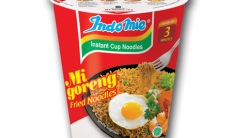South Africa: Geekonomics
AllAfrica.com, Washington
OPINION
4 December 2014
Posted to the web 4 December 2014
Frank Walters And Matthew Stern
Johannesburg
THE ministers of finance and of trade and industry have started a surprisingly and refreshingly public discussion about trade and industrial policy.
In his budget presentation to Parliament Finance Minister Trevor Manuel cut to the heart of the issue by posing the key question: how can trade and industrial policies best promote the global competitiveness of South African companies, thereby increasing overall economic growth and job creation?
Trade and Industry Minister Mandisi Mpahlwa replied by repeating his department’s emphasis on the need for strategic and selective trade and industrial policy interventions to nurture domestic industries and assist them to overcome disadvantages in local and international markets.
Both ministers claim to draw on international experience. This is certainly useful, but this experience needs to be interpreted carefully and correctly. Rather than continuing to debate the international experience, let’s consider the more obvious and immediate evidence from SA itself.
Mpahlwa feels that trade liberalisation will not improve the competitiveness of domestic firms. Economic analysis of SA’s immediate post-apartheid experience reaches a very different conclusion — trade liberalisation and deregulation led to across-the-board improvements in competitiveness in virtually all industries. Significant increases in export and import intensities showed that the economy can adjust through selective shrinking and expansion of firms and activities according to their competitive abilities; that SA can compete globally; and that an effective way to achieve this is to remove shackles of protection and bad regulation. To deny any of this is to fly in the face of overwhelming economic evidence.
Mpahlwa also claims that SA’s trade is already substantially liberalised. He quotes low average tariff rates, but ignores the many high rates in key sectors. Measured by the number of rates above, say, 15%, SA has liberalised far less than is apparent from the averages. Furthermore, selective tariff rate decreases have not always reduced effective protection. In fact, the policy of leaving high rates on anything produced domestically and eliminating tariffs on inputs, has increased effective protection and perpetuated the inward- looking bias of South African manufacturing.
Mpahlwa continues the mantra about the importance of carefully crafted, selective and strategic policies tailored to the needs of particular sectors. He supports this view by mistakenly identifying many well-known policy failures in Asian countries as reasons for their success. Instead of searching for mystic solutions from abroad, let’s look at the hard evidence at home. Have selective and strategic sectoral interventions helped South African firms to achieve global competitiveness?
The Motor Industry Development Programme (MIDP) continues to be held up as the paragon of our industrial policy. No matter that, by our estimates, it has resulted in subsidies from South African consumers and taxpayers to a handful of foreign car makers of well over R100bn over the past 10 years. No matter that it has created no new jobs in manufacturing and has certainly constrained job creation in downstream sales and servicing. No matter that it is scheduled to go on at least until 2012, possibly 2020, and that most of the industry admits that it will never be globally competitive in SA. No matter that after three years and studies commissioned from two sets of consultants, the government has not yet completed a promised review of the programme.
The story does not end with the MIDP. As an ad hoc addition to its long-promised but not yet delivered strategy for the textile and garment industry, the government decided to “protect” the industry by imposing quotas on imports from China. The immediate results were to penalise garment retailers and poor consumers, and, most perversely, to harm garment makers by denying them access to key fabric inputs. In response to the rising cost of this ill-conceived intervention the government relaxed the import quotas, but has given a veto over all quota allocations to the unions.
Propping up uncompetitive firms doesn’t end with the private sector. As part of its promotion of high tech and strategic industries, the government continues to subsidise Denel Corporation, the state-owned arms and aerospace company. For what? Primarily, it seems, to sequester some of SA’s most talented scientists and engineers in a state enterprise that specialises in commercially and economically unviable projects.
SA’s strategic, sector-specific industrial policies have been very costly. There is no evidence that they have increased the global competitiveness and economic sustainability of the protected sectors and firms. In fact the overwhelming evidence is that these interventions breed not competitiveness, but requests for more subsidies — demands the government finds difficult to assess or resist. Meanwhile, taxpayers, workers and consumers suffer while more competitive activities get discouraged and/or crowded out by incentives that promote inward-looking rather than outward-looking investments.
We hope that Manuel’s well-spoken words about global competitiveness continue to resonate in the cabinet.
Matthew Stern and Frank Flatters are from Development Network Africa, a private economic and development consulting firm. Visit





